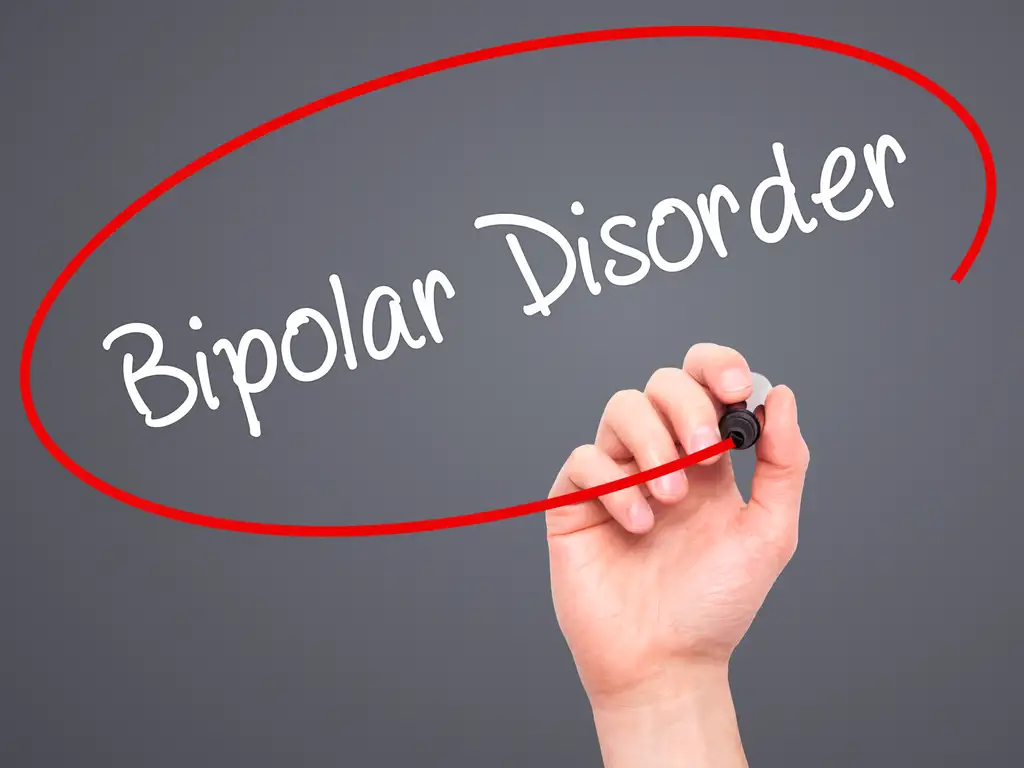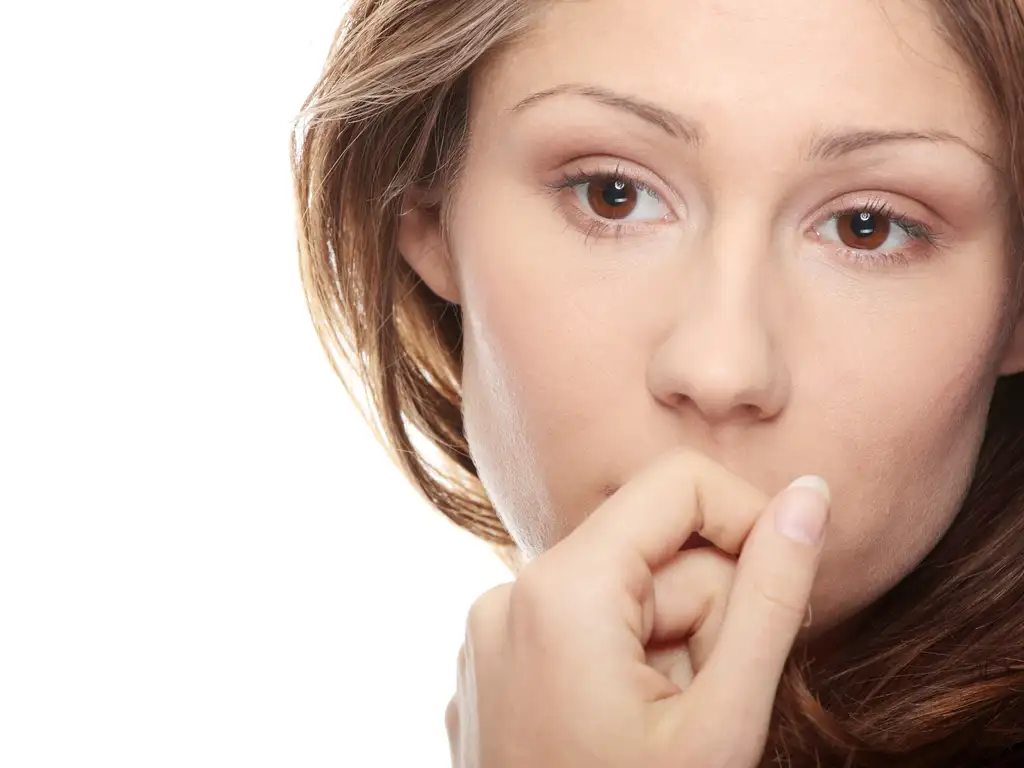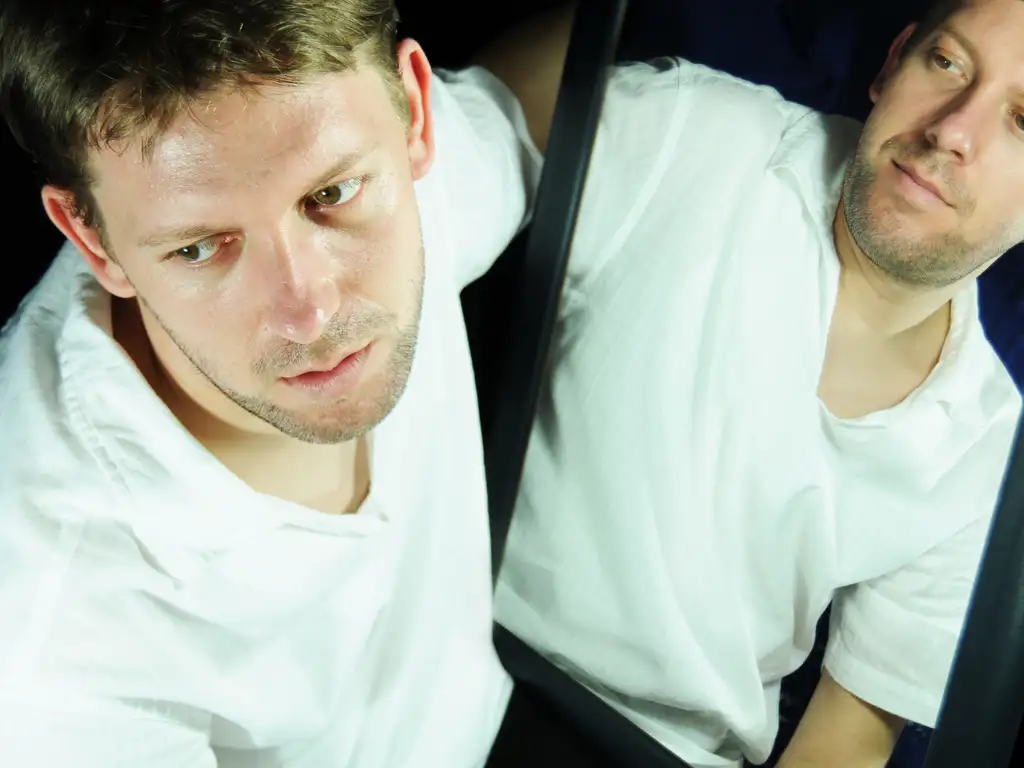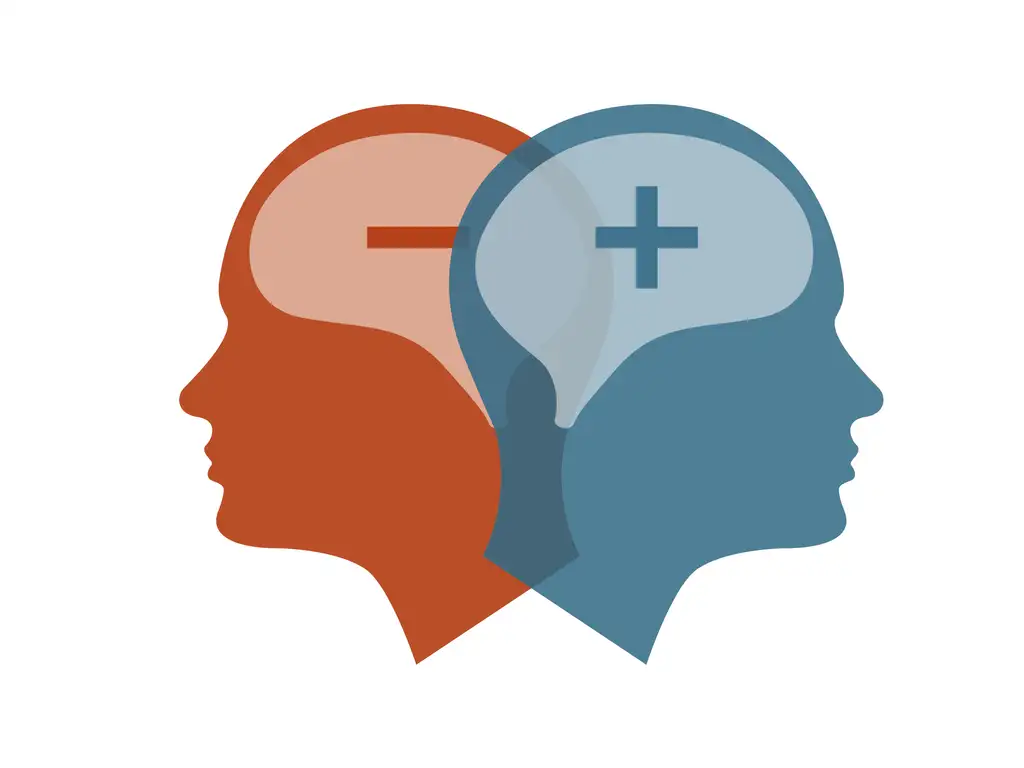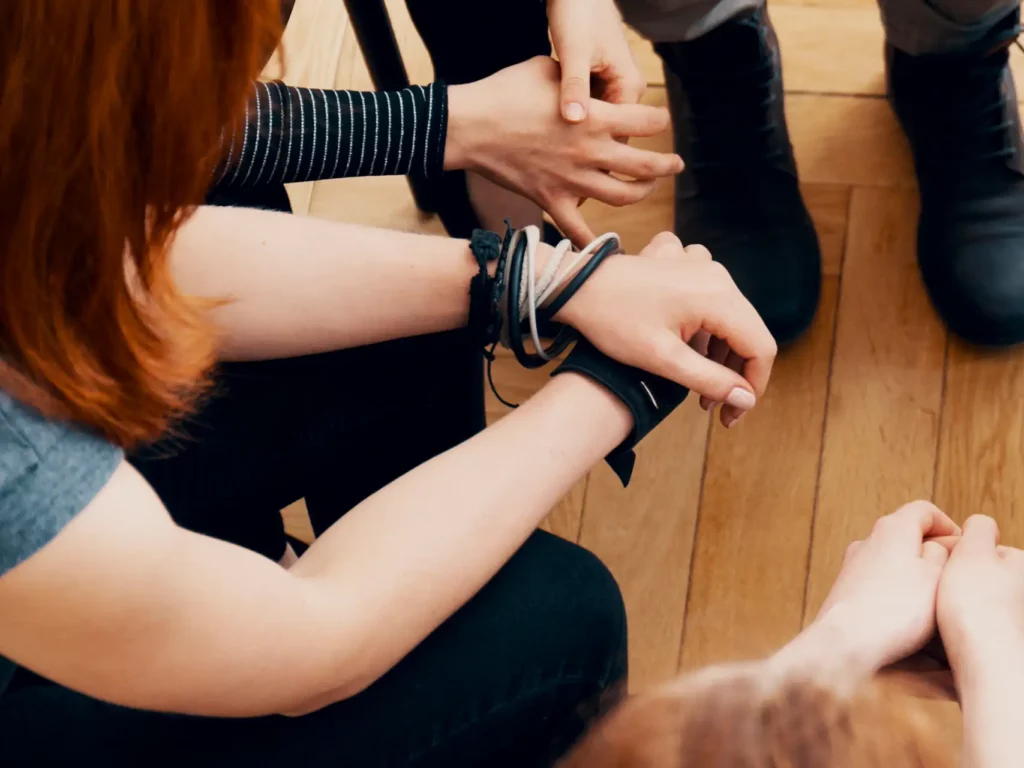Many people who struggle with addiction also deal with other mental illnesses, such as bipolar disorder. Previously referred to as “manic depression,” this condition is characterized by extreme highs and lows in emotional stability.
According to the Substance Abuse and Mental Health Services Administration (SAMHSA), anywhere from 21.7% to 59.0% of those who have bipolar disorder also struggle with substance use. and addiction
People with bipolar disorder are more likely to engage in using drugs and drinking alcohol for reasons that are not well understood. Drug abuse and alcohol consumption can exacerbate symptoms of bipolar disorder.
Drugs and alcohol misuse can also lead to the onset of bipolar disorder in people who have never experienced a mood swings or mental health problems before.
This article will examine the relationship between bipolar disorder and addiction.
What Is Bipolar Disorder?
Bipolar disorder, or bipolar affective disorder, is a prevalent mental illness that profoundly impacts a person’s energy levels, daily functioning, and emotional state. This condition is characterized by recurring episodes of mania or hypomania, alternating with periods of depression. It is essential to note that bipolar disorder is frequently misdiagnosed initially due to its complex nature.
Mood episodes are periods of extreme emotional states encountered by individuals with bipolar disorder, lasting anywhere from a few days to several weeks. These changes in mood are classified as either manic episodes or depressive episodes. Nevertheless, those who have bipolar disorder often have periods of emotional stability.
Mood swings are common even in those who don’t have bipolar disorder. However, they often only last for hours as opposed to days. These mood swings or shifts also don’t usually cause drastic behavioral changes or make it hard to go about daily life or interact with other people. Bipolar disorder can make it difficult for a person to get along with their friends and family and for them to work or go to school.
What are the types of Bipolar Disorder?
There are three types of bipolar disorder:
- Bipolar I
- Bipolar II
- Cyclothymic Disorder
Bipolar I Disorder
One of the grounds for a diagnosis of bipolar I disorder is the occurrence of a manic episode. Those with bipolar I disorder often experience feeling either on top of the world and bursting with energy or extremely irritated and restless during a manic episode. They also go through periods of normal mood in addition to the manic and depressive episodes they encounter.
Manic Episode
Having more energy than usual and feeling excessively elated or irritable for at least a week constitutes a manic episode.
Three or more of the following shifts in behavior are also common symptoms:
- Having a lot of energy while getting a lot less sleep than normal
- Talking more or faster
- Disruptive speech patterns, such as rapidly switching subjects or having racing thoughts
- Becoming easily distracted
- Increased activity characterized by restlessness, multitasking, etc
- Higher likelihood of engaging in risky activities like speeding and excessive spending
Friends and family should be able to tell that these actions are out of character for the person. The severity of the symptoms must be such that they interfere with daily life, either at work or at home, or with social obligations. Manic episodes typically require hospitalization for the person’s own safety.
Some people who suffer from mania also exhibit psychotic symptoms, such as illogical thought processes, erroneous beliefs, and hallucinations.
Hypomanic Episode
Manic symptoms are less intense in a hypomanic episode, and the individual only experiences them for four days in a row as opposed to a week. Unlike manic symptoms, hypomanic episodes do not create severe disruptions to one’s regular life.
Major Depressive Episode
Major depressive episodes typically last for at least two weeks and are characterized by at least five of the symptoms listed below:
- Despair or intense sadness
- Disinterest in past hobbies and interests
- Guilt or feelings of worthlessness
- Exhaustion
- Increased or decreased appetite
- Increased or decreased sleep
- Restlessness
- Slowing of speech or movement
- Trouble focusing
- Persistent suicidal ideation
Bipolar II Disorder
To be diagnosed with bipolar II disorder, a person must experience both hypomanic and major depressive episodes.
Between episodes, people are able to resume their regular activities. Hypomanic periods frequently seem pleasant and might even boost productivity at work or school, which is why many people with this bipolar II disorder wait until they experience a major depressive episode before seeking therapy.
The depressive and manic symptoms of bipolar II disorder are often exacerbated by the presence of co-occurring conditions, such as substance use.
Cyclothymic Disorder
Cyclothymic disorder, a milder variant of bipolar disorder, is characterized by recurrent “mood swings” between hypomania and depression. People with cyclothymia have shifting moods, although the symptoms are less severe than those of bipolar I or II.
The following are symptoms of the cyclothymic disorder:
- Symptoms of hypomania and depression over at least two years, but not severe enough to qualify as an episode.
- At least half of the time throughout the span of two years was spent experiencing mood swings that seldom lasted longer than two months at a time.
What Causes Bipolar Disorder?
Although researchers have not pinpointed a specific cause for bipolar disorder, they do believe that genetics play a significant role. In fact, over two-thirds of those who have bipolar disorder also have a close biological relative who also struggles with the condition. Nevertheless, having a family member who suffers from bipolar disorder is no guarantee that you will too.
Researchers also point to a variety of factors as possible contributors to the onset of bipolar disorder:
- Neurological changes: Researchers have shown that persons with bipolar disorder exhibit slight variations in the size or activity of specific areas of the brain. However, brain scans are ineffective in detecting this disorder.
- Environmental factors: An episode of mania or depression may be triggered by the stress of dealing with a life crisis, such as the loss of a loved one, a significant illness, a divorce, or financial difficulties. This suggests that emotional and physical stress may both contribute to the emergence of manic-depressive symptoms.
Scientists are actively investigating the impact these elements may have in the development of bipolar disorder, as well as in its treatment and prevention.
Diagnosing Bipolar Disorder Symptoms
A mental health professional may employ a number of methods to diagnose bipolar disorder, including:
- Physical examination
- Assessing a person’s complete medical history, including information regarding their symptoms, and personal and family medical background
- Blood tests and other diagnostic procedures to rule out other possible medical causes of a person’s symptoms, such as hyperthyroidism
- A mental health evaluation conducted by a general practitioner or referred to a psychologist or psychiatrist.
You need to have had at least one manic or hypomanic episode before a doctor will diagnose you with bipolar disorder.
Providers of mental health services diagnose bipolar disorder using the Diagnostic and Statistical Manual of Mental Disorders or DSM. They can tell what subtype of bipolar illness a patient may have by looking at how the symptoms manifest themselves during the most disruptive episodes.
These co-occurring conditions are more common in those who have bipolar disorder.
- Substance use disorders
- Post-traumatic stress disorder (PTSD)
- Attention-deficit hyperactivity disorder (ADHD)
- Anxiety
This, along with the fact that people’s memories are typically affected during mania to the point that they don’t recall experiencing it, can make it challenging for medical professionals to accurately diagnose bipolar illness.
Individuals with bipolar disorder suffering an extreme manic episode characterized by hallucinations may be misdiagnosed as having schizophrenia. It’s also possible to mistake bipolar disorder for borderline personality disorder (BPD).
This is why it’s so crucial to offer a complete and honest account of your bipolar disorder symptoms and history when consulting a medical professional. It can be beneficial to bring a family member or close friend along to your doctor’s appointments who is familiar with your mental health history.
Treatment Options for Living With Bipolar Disorder
Living with bipolar disorder is a condition that requires ongoing care. It may take a person and their doctor a few months to a year or more to settle on a thorough treatment strategy. Despite the setback, it’s crucial to keep up with treatment.
Manic and depressive episodes tend to reoccur periodically. In some instances, symptoms may persist between episodes. These symptoms can be managed with ongoing, long-term treatment.
Bipolar disorder treatment might be complicated by the presence of other mental illnesses like anxiety or ADHD. Antidepressants used to treat obsessive-compulsive disorder (OCD) and stimulants used to treat ADHD have both been linked to exacerbating or even triggering manic episodes in people with bipolar disorder.
There is more than one way to treat bipolar disorder. These include healthy lifestyle habits like exercise, yoga, and meditation, as well as self-management techniques like education and recognizing the early indications of an episode or likely causes of episodes. These steps are meant to supplement treatment rather than serve as a replacement for it.
Combinations of the following treatments are often used to achieve the best results:
Psychotherapy
Talk therapy (or psychotherapy) has been shown to be helpful in the treatment of bipolar disorder.
Psychotherapy is an umbrella word for a range of approaches to mental health care that focus on recognizing and addressing problematic patterns of thinking and action. You and your loved ones can benefit from the counsel, information, and support offered by mental health professionals like psychologists and psychiatrists.
Therapy options for bipolar disorder vary and can include the following:
- Cognitive behavioral therapy (CBT): This form of treatment is systematic and focused on specific goals. During therapy, you and your psychologist or therapist examine your internal thoughts in great detail. You’ll realize that your thoughts determine your behavior. CBT allows people to replace unhealthy thought patterns and routines with more positive ones.
- Family-focused therapy: People of all ages, including both children and adults and their caretakers, can benefit from this treatment for bipolar disorder. Family members are encouraged to participate in therapy sessions with you, where topics such as bipolar disorder education, communication skills development, and problem resolution will be covered.
- Psychoeducation: A method used by mental health experts, psychoeducation is used to educate the public about mental illness. Since bipolar disorder is a multifaceted illness, you and your family members will benefit from a better understanding of the disorder and its symptoms.
- Interpersonal and social rhythm therapy (IPSRT): The goal of this treatment is to help you maintain positive emotional states by identifying and counteracting negative biological and social cycles. Bipolar disorder and other mood disorders respond well to IPSRT. Methods for dealing with stress, managing one’s social life, and maintaining a regular medication schedule are emphasized in this treatment strategy. Skills learned in IPSRT can be used as a buffer against the recurrence of depressive or manic episodes.
Medications
Some medications are helpful in the treatment of bipolar disorder. With your doctor’s help, you may have to test a few different drugs before you find the one that gives you the best results.
When treating bipolar disorder with medication, it’s crucial to:
- Get the information from your doctor about the potential advantages and drawbacks of the drug.
- If you are currently taking any medications, whether they are prescribed or over-the-counter, or supplements, be sure to inform your doctor.
- Contact your doctor immediately if you have any severe adverse reactions. It’s possible you’ll need a different drug or a dose adjustment.
- Keep in mind that it’s crucial to take bipolar disorder medication precisely as prescribed.
The following are examples of medications typically prescribed by doctors for the treatment of bipolar disorder:
Mood Stabilizers
Mood-stabilizing medication is often necessary for people who have bipolar disorder to deal with periods of mania and hypomania. Some examples of mood stabilizers are:
- Carbamazepine
- Divalproex sodium
- Lamotrigine
- Lithium
- Valproic acid
One of the most common drugs used to treat bipolar illness, lithium has also been the subject of much research. Lithium is a naturally occurring salt that can start alleviating manic symptoms in as little as two weeks; however, it can take many weeks or months before all symptoms are under control. This is why doctors frequently prescribe additional medications like antipsychotics and antidepressants to aid with relieving symptoms.
Lithium use is associated with a higher risk of thyroid and renal issues. Lithium levels in the blood can quickly rise too high, so your doctor will also keep an eye on how well your thyroid and kidneys are functioning.
Changing to a low-sodium diet, sweating excessively, having a fever, vomiting, or diarrhea can all cause your body’s sodium levels to drop, which can lead to a dangerous accumulation of lithium. If you are taking lithium and have any of these symptoms, it is vital that you inform your doctor. Symptoms of a lithium overdose include:
- Uncontrolled eye movements
- Unusual bruising or bleeding
- Extremely fast or slow heartbeat
- Difficulty breathing
- Passing large amounts of pee
- Blurred vision or double vision
- Confusion and dizziness
- Severe trembling or convulsions
- Irregular pulse
Antipsychotic Medications
When treating individuals with bipolar disorder, doctors frequently recommend a combination of a mood stabilizer and a second-generation or atypical antipsychotic. These medications are helpful in treating both mania and depression.
The U.S. Food and Drug Administration (FDA) has only authorized four of these medications for the treatment of bipolar depression.
- Cariprazine
- Olanzapine-fluoxetine combination
- Lurasidone
- Quetiapine
However, other drugs, including olanzapine, risperidone, and aripiprazole, are also often prescribed.
Antidepressants
When treating depressive episodes, doctors may administer antidepressants, along with a mood stabilizer, to ensure that the patient does not have a manic episode as a side effect. When treating bipolar disorder, antidepressants are never administered alone since doing so might cause a manic episode.
The Link Between Bipolar Disorder and Addiction
According to studies conducted in 2021, those who suffer from both bipolar disorder and substance use disorder are more likely to have alcohol use disorder. However, it’s also possible for someone who has bipolar disorder to develop a dependency or dysfunctional relationship with substances like nicotine, cannabis, or cocaine.
Researchers have a limited understanding of the connections between bipolar disorder and the abuse of drugs and alcohol. Nonetheless, the following are some of the possible links between bipolar disorder and addiction.
Self-medication
According to SAMHSA, people with bipolar disorder might turn to drugs and alcohol or intoxicants as a means of coping with their symptoms.
For instance, a person with this disorder may use marijuana to calm down from mania or cocaine to perk up during depressive episodes. They may start using drugs to help them feel “normal.”
Variations in Brain Anatomy
In 2017, researchers investigated the relationship between brain bipolar disorder, addiction, and abnormalities in teenagers.
They found that bipolar disorder and addiction are linked to problems with the prefrontal cortex (PFC). Regions of the PFC that may influence bipolar disorder also affect areas that may contribute to substance use disorder. The PFC is a brain region that is crucial for:
- Attention
- Memory
- Cognitive flexibility
- Impulse control
Genetics
Both bipolar disorder and substance use disorder can occur in families, leading researchers to believe that they may have genetic causes. However, they acknowledge that further research is required to support this theory.
Addiction Treatment for People With Bipolar Disorder
Although a dual diagnosis of bipolar disorder and drug abuse might make treating either condition more challenging, getting help as soon as possible is still recommended.
According to studies conducted in 2021, patients with bipolar disorder and drug abuse should be treated on an individual basis. The type of care a person needs may vary depending on the substance being used.
Research shows that a combination of lithium and valproate may be effective in treating people with bipolar disorder, plus an addiction to cannabis or cocaine. Citicoline has also been shown to lessen cocaine use in those with bipolar disorder. However, it’s possible that this treatment will lose its effectiveness after a while.
SAMHSA has found a correlation between medications for treating bipolar disorder and improvement in substance use disorder. Researchers discovered that when lithium was combined with the mood stabilizer divalproex sodium, alcohol intake decreased.
The antipsychotic quetiapine has been shown to be effective in treating bipolar disorder, and there is evidence that it can also help reduce alcohol consumption and cravings. However, contradictory results were seen in other research involving quetiapine. Because of this, further study is required to verify its efficacy.
Addiction is often accompanied by mental health issues, which can be addressed through psychosocial therapy. There are typically three methods used in this type of treatment:
- Sequential: Sequential therapy entails focusing on the more severe condition before attending to the other one.
- Parallel: Parallel therapy is when both disorders are treated at the same time by doctors.
- Integrated: In an integrated approach, both conditions are addressed at the same time, followed by any other disorders an individual may have.
The Bottom Line
There is a strong correlation between bipolar disorder and substance use disorder. Although the specific cause of the link is unclear, researchers suspect that it’s due to:
- Self-medication
- Genetics
- Brain anatomy
Although bipolar disorder is a chronic condition that lasts a person’s whole life, it doesn’t have to be debilitating. Managing the symptoms of bipolar disorder can be challenging, but doing things for yourself on a regular basis and depending on your support system can make a big difference.
People with bipolar disorder who also struggle with substance abuse can choose from several treatment options.
Turning Point of Tampa Treats Dual Diagnosis
Individuals with bipolar disorder and substance abuse disorders can manage their symptoms with ongoing treatment. A bipolar disorder diagnosis given to a person while they are using drugs is challenging. Stimulant drug abuse can present similarly to symptoms of bipolar disorder like manic depression and mania symptoms.
Turning Point of Tampa helps those willing to stop using alcohol and drugs. Bipolar disorders, anxiety disorders, major depression, are diagnosis’s our clinical team understand. We recognize signs and symptoms of dual diagnosis and co-occurring disorders.
If you’re looking for a treatment facility that that specializes in addiction and mental health conditions, Turning Point of Tampa can help you deal with bipolar disorder and addiction, alcoholism or eating disorders. We are here for you. Get in touch today!
Sources:
https://www.healthline.com/health/bipolar-disorder#takeaway
https://my.clevelandclinic.org/health/diseases/9294-bipolar-disorder
https://www.psychiatry.org/patients-families/bipolar-disorders/what-are-bipolar-disorders
https://pubmed.ncbi.nlm.nih.gov/7883738/
https://www.medicalnewstoday.com/articles/bipolar-and-addiction

